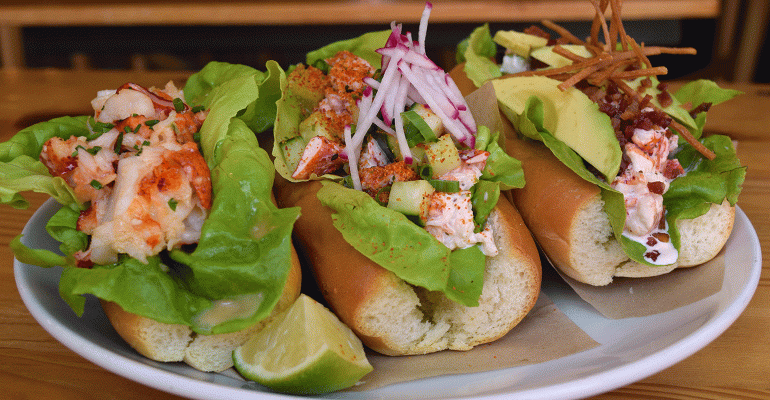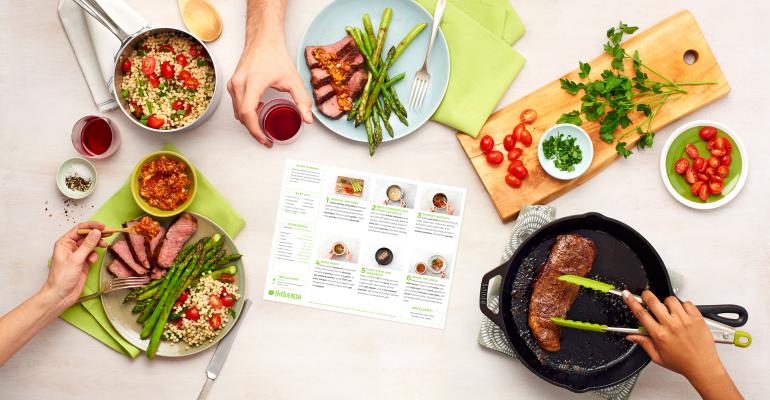
Oct 23, 2017
Lisa Jennings | Restaurant Hospitality | October 19, 2017
Chicago pizzeria owner Simon Mikhail had been working with UberEats for about a year when the third-party delivery service approached him last year with a proposition.
UberEats users in his neighborhood had been searching for “chicken” through the delivery service’s app, they told him, but there wasn’t much available. Was Mikhail interested in filling that void?
“I said, ‘I can do fried chicken. I have a fryer,’” said Mikhail, owner of Si-Pie Pizzeria.
But rather than adding fried chicken his pizzeria’s menu, UberEats worked with Mikhail to create a new concept, dubbed Si’s Chicken Kitchen, which was available only through the app as a virtual restaurant without any brick-and-mortar presence.
The virtual Si’s Chicken Kitchen has been open for about a year and averages about $1,000 per week in sales of fried chicken, chicken tenders and chicken pizza — all made in the pizzeria’s kitchen. Sales have already surpassed delivery sales of the original pizza concept.
“I’m selling more fried chicken than pizza for delivery,” Mikhail said.
With a second pizzeria location in the works, Mikhail also plans to do separate virtual concepts from that kitchen too, including a possible delivery-only burger restaurant.
The notion of virtual restaurants isn’t new. As delivery has gained momentum, a growing number of operators have launched delivery-only concepts, and not just with UberEats.
But the fact that UberEats is looking to use its data to identify locations where such virtual concepts would work brings a new weapon to the competitive delivery battlefield.
CONTINUE READING

Oct 17, 2017
Lisa Jennings | Restaurant Hospitality | October 10, 2017
The already heated competition for butts in seats in the independent restaurant industry is about to get hotter. But the biggest threat to market share comes not from the restaurant down the street, but from outside the industry.
Restaurant operators may soon see themselves losing guests to the local grocery store offering cooked-to-order meals and table-service, along with a full bar.
At the same time, the young-but-full-of-potential meal-kit industry is also out to steal diners from restaurants, offering quality and unique ready-to-cook-dishes — often at a lower price — directly to consumers where they live.
And there’s potential cross over between the two. Grocery stores are also beginning to offer meal kits to appeal to the growing number of consumers who don’t know how to cook, or don’t want to.
This year e-commerce giant Amazon bought the specialty grocery chain Whole Foods Market, a move that has sparked a wave of speculation about how Americans will be enjoying the home delivery of all manner of fresh ingredients and pre-prepped meals in future.
Behind both of these trends is a common theme: Time-starved diners across the country are looking for convenience.
Consumers want to eat well, but the pull of the couch at home is strong. The one-stop shopping of the “grocerant,” and the home-delivered ready-to-cook meal kit give diners two more reasons to skip the neighborhood bistro.
In the spirit of knowing one’s enemy, here’s a look at the growing threat from grocery stores and meal kits.
Grocery stores get into the restaurant business
For years, restaurants have had to compete with grocery stores, with their in-store delis, rotisserie chickens and salad bars.
Last year, however, eating meals outside the home surpassed those eaten at home, and the grocery industry felt the jolt of a shift in consumer behavior.
In May, grocery spending grew just 2.6 percent year-over-year, compared with a 4.8 percent increase at restaurants, according to credit card company Visa’s Retail Spending Monitor.
Seeing that shift, grocery stores are looking for ways to increase foot traffic and win that spending back.
CONTINUE READING


